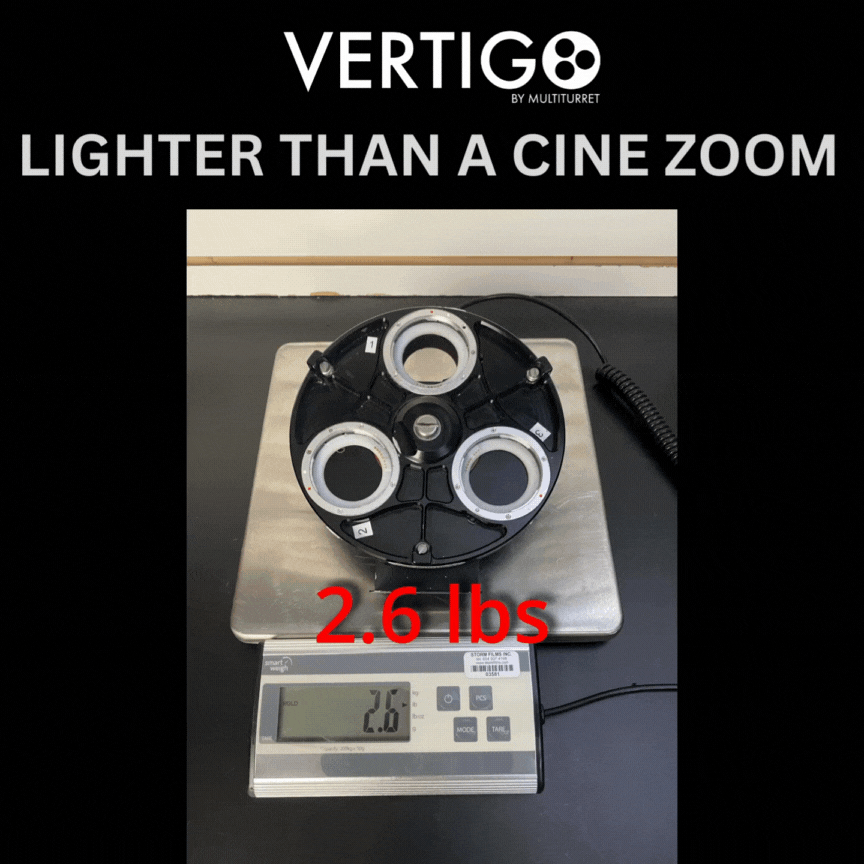FAQs
Why don’t you just use a zoom?
• Fast moving camerawork demands quickly shifting from a wide shot to a long lens shot. Modern cameras with large sensors no longer permit the use of decent zooms like those of S16 or 2/3” video.
It’s physics: Bigger Sensor (Bs)= Smaller zoom ratio (SzR)= Frustrated Cinematographer (FFSC).
• Zooms have a number of drawbacks compared to primes. They’re heavier, require more light, often have optical drawbacks and are generally more expensive. The Vertigo allows the user to use the advantages of their primes with some of the flexibility of a zoom.
• We love zooms and use them all the time. The Vertigo is generally intended to compliment a prime set rather than replace a zoom.
How did this all start?
Out of frustration and poor humour, madness formed. From madness, the Vertigo rose like a spinning wheel of hope. Read Ian’s manifesto.
Who’s the guy with the beard?
Vertigo inventor Ian Kerr csc is an Emmy-award winning Canadian cinematographer who specializes in documentary filmmaking.
Ian was formerly adjunct professor of Advanced Cinematography at UBC and SFU film schools, and he continues to lecture and teach workshops. He also contributes to publications including The New York Times and Canadian Cinematographer.
Ian also creates custom solutions for problems like “how to film inches from a polar bear at midnight using only moonlight for illumination?” or “can I make a modern lens-turret?”.
Isn’t that heavy?
Yes! Sadly, most professional camera systems are not kind to our spines, but the Vertigo uses lightweight stills lenses and the overall weight is less than a cine zoom of comparable performance.
The benefit of the Vertigo is that it’s also shorter, meaning handheld rigs are easier to balance.




